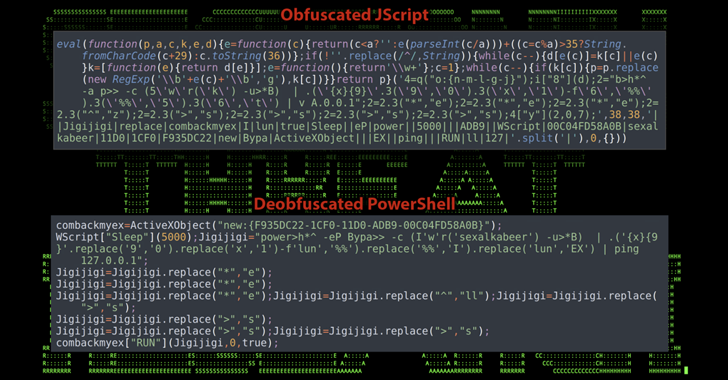Cybersecurity researchers have discovered an ongoing phishing campaign that makes use of a unique attack chain to deliver the XWorm malware on targeted systems.
Securonix, which is tracking the activity cluster under the name MEME#4CHAN, said some of the attacks have primarily targeted manufacturing firms and healthcare clinics located in Germany.
"The attack campaign has been leveraging rather unusual meme-filled PowerShell code, followed by a heavily obfuscated XWorm payload to infect its victims," security researchers Den Iuzvyk, Tim Peck, and Oleg Kolesnikov said in a new analysis shared with The Hacker News.
The report builds on recent findings from Elastic Security Labs, which revealed the threat actor's reservation-themed lures to deceive victims into opening malicious documents capable of delivering XWorm and Agent Tesla payloads.
The attacks begin with phishing attacks to distribute decoy Microsoft Word documents that, instead of using macros, weaponize the Follina vulnerability (CVE-2022-30190, CVSS score: 7.8) to drop an obfuscated PowerShell script.
From there, the threat actors abuse the PowerShell script to bypass Antimalware Scan Interface (AMSI), disable Microsoft Defender, establish persistence, and ultimately launch the .NET binary containing XWorm.
Interestingly, one of the variables in the PowerShell script is named "$CHOTAbheem," which is likely a reference to Chhota Bheem, an Indian animated comedy adventure television series.
"Based on a quick check, it appears that the individual or group responsible for the attack could have a Middle Eastern/Indian background, although the final attribution has not yet been confirmed," the researchers told The Hacker News, pointing out that such keywords could also be used as a cover.
XWorm is a commodity malware that's advertised for sale on underground forums and comes with a wide range of features that allows it to siphon sensitive information from infected hosts.
UPCOMING WEBINAR
Learn to Stop Ransomware with Real-Time Protection
Join our webinar and learn how to stop ransomware attacks in their tracks with real-time MFA and service account protection.
The malware is also a Swiss Army knife in that it can perform clipper, DDoS, and ransomware operations, spread via USB, and drop additional malware.
The exact origins of the threat actor are currently unclear, although Securonix said the attack methodology shares artifacts similar to that of TA558, which has been observed striking the hospitality industry in the past.
"Though phishing emails rarely use Microsoft Office documents since Microsoft made the decision to disable macros by default, today we're seeing proof that it is still important to be vigilant about malicious document files, especially in this case where there was no VBscript execution from macros," the researchers said.
Found this article interesting? Follow us on Twitter and LinkedIn to read more exclusive content we post.
.png)
 1 year ago
81
1 year ago
81 

















 Bengali (Bangladesh) ·
Bengali (Bangladesh) ·  English (United States) ·
English (United States) ·